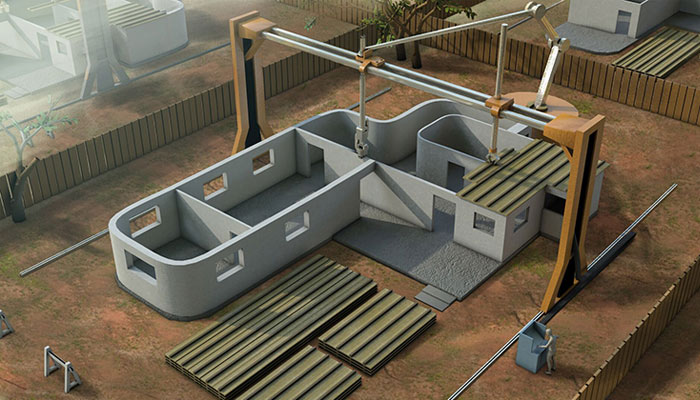As we navigate through the evolving sphere of technology, one breakthrough stands significantly in the industry of infrastructure: 3D fabrication. This exceptional method is reshaping the manner buildings and frameworks are envisioned and assembled, bringing forth a new era of efficiency, environmental responsibility, and creativity.
Reshaping Building: One Layer at a Moment
The integration of 3D manufacturing in construction presents multiple game-changing advantages. Chief among these is the substantial decrease in material excess. Classic building approaches usually lead in notable surplus materials that add to sustainability-related waste. In contrast, 3D fabrication utilizes a precise incremental approach, consuming only the required portion of resource and thus limiting waste significantly.
Another noteworthy perk is the immense reduction in construction period. Projects that historically require long periods can be finished in a portion of the duration with 3D fabrication technologies. This acceleration is due to the automated nature of 3D machines that can work around the clock without manual intervention, significantly shortening total project schedules.
Moreover, 3D manufacturing opens up prospects for constructing sophisticated, tailored structures at no added price. The adaptability of 3D machines permits for intricate designs and forms to be created that would either be extremely expensive or unfeasible to achieve with standard construction methods. This function not only improves design aesthetics but also allows engineers to maximize designs for better performance and longevity.

Cutting Expenditures and Improving Accessibility
Budget reduction is yet another notable perk delivered by 3D manufacturing in building. By minimizing manpower expenses and decreasing the duration needed to finish developments, the overall cost associated with developing structures is reduced. Additionally, cheap 3D printing units are growing more accessible, making this innovation within reach of emerging firms and individuals enthusiastic to discover its potentials.
The cost-effectiveness of these devices also opens opportunities for advancement in associated areas such as garment printing. While chiefly known in infrastructure circles, the reach of 3D printing spans into various domains including fashion. Here, creators explore with 3D manufactured clothing, challenging design constraints and reshaping fabric design while gaining minimal production expenses.
A Green Future Driven by Innovation
Environmental responsibility is another cornerstone of this method’s appeal in the infrastructure sector. 3D printing supports a sustainable method to construction by reducing material surplus and power consumption. Moreover, it enables the integration of green resources like recycled synthetics or hybrid blends, which further lowers the ecological footprint of this conventionally resource-intensive sector.
The worldwide movement to sustainable approaches discovers a powerful partner in 3D fabrication systems, possibly reshaping how architectural policies and standards are formulated in the future. By implementing these cutting-edge processes, the construction industry moves towards realizing eco-friendly operational strategies.
Transforming Dreams to Existence
Imagine community hubs in underprivileged areas being constructed within days to serve pressing requirements or designers crafting masterpieces reminiscent of organic patterns that blend effortlessly into their landscapes – such situations are not only theoretical but are rapidly becoming possible through 3D fabrication.
While these achievements signify just the beginning, they indicate a era where building harmonizes perfectly with both societal aspirations and ecological stewardship.
If we advance on this path, construction will not only mean the structural creation of environments but also signify a dedication to innovative mindsets and ethical practices. Connecting artistry with usability, 3D fabrication stands poised to transform our tangible world in ways we are just starting to understand.
Through constant advancements and an embracing of these futuristic strategies, our developed environments will surely morph into representations of human brilliance powered by the precision and limitless possibilities of 3D printing.
More details about may in soi nhuasee the best net page
